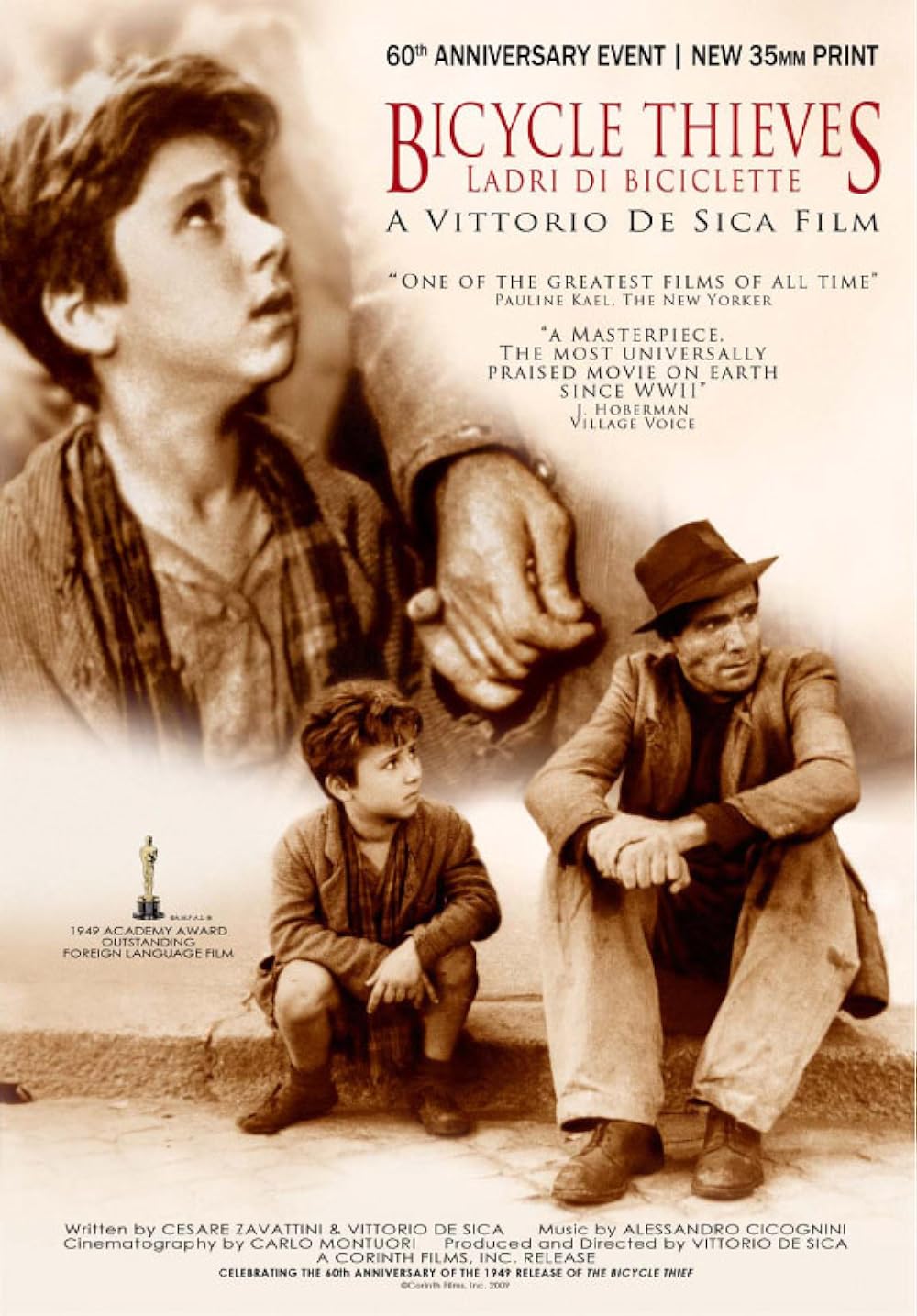Bicycle Thieves (1948) – A Heartfelt Exploration of Human Struggle
Type: Movie
Country: Italy
Genre: Drama, Neorealism
Release Date: November 24, 1948
Duration: 89 minutes
Director: Vittorio De Sica
Production Companies: Produzioni De Sica
Cast: Lamberto Maggiorani, Enzo Staiola, Lianella Carell, Gino Saltamerenda
Quick Review:
“Bicycle Thieves” (1948), directed by Vittorio De Sica, is a poignant Italian neorealist film that delves into the depths of human despair and dignity. Set in post-World War II Rome, the film follows a father and son as they search for a stolen bicycle essential to their survival. With powerful performances and a raw, emotional narrative, “Bicycle Thieves” remains a timeless classic that continues to resonate with audiences.
Plot Summary:
The story revolves around Antonio Ricci (Lamberto Maggiorani), an unemployed man in post-war Rome, who finally finds a job that requires a bicycle. His wife Maria (Lianella Carell) pawns their bedsheets to redeem Antonio’s bicycle from the pawnshop, symbolizing their hope and sacrifice. On his first day of work, Antonio’s bicycle is stolen, plunging the family into a desperate situation.
With the help of his young son Bruno (Enzo Staiola), Antonio embarks on a frantic search through the streets of Rome to find the stolen bicycle. Their journey takes them through various parts of the city, highlighting the harsh realities and struggles of the working class. The search becomes increasingly desperate, revealing the profound bond between father and son, as well as the lengths to which people will go to survive.
Characters and Performances:
- Lamberto Maggiorani (Antonio Ricci): Maggiorani delivers a heartfelt performance as Antonio, capturing the character’s desperation, frustration, and determination. His portrayal of a man grappling with the loss of dignity and the struggle to provide for his family is both authentic and moving.
- Enzo Staiola (Bruno Ricci): Staiola’s performance as Bruno is remarkable, providing a sense of innocence and resilience. The father-son dynamic is beautifully portrayed, with Bruno’s loyalty and hope providing a poignant counterpoint to Antonio’s despair.
- Lianella Carell (Maria Ricci): Carell’s portrayal of Maria is understated yet powerful, reflecting the silent strength and support of a loving wife and mother.
Direction and Cinematography:
Vittorio De Sica’s direction is masterful, utilizing the neorealist style to convey a sense of authenticity and immediacy. The film’s use of non-professional actors adds to its raw, documentary-like feel, immersing the audience in the reality of post-war Rome.
The cinematography by Carlo Montuori captures the stark beauty of the city, juxtaposing its grandeur with the harshness of everyday life for the working class. The film’s visual storytelling is powerful, with carefully framed shots that emphasize the characters’ emotional journeys.
Music:
Alessandro Cicognini’s score complements the film’s narrative, enhancing the emotional depth of the story. The music is subtle and evocative, supporting the film’s themes without overshadowing the raw performances and naturalistic dialogue.
Why It Endures:
“Bicycle Thieves” endures as a classic due to its universal themes of poverty, dignity, and the human spirit. The film’s portrayal of a father’s desperation to provide for his family and the deep bond between father and son resonates across cultures and generations.
Its neorealist approach, capturing real locations and using non-professional actors, creates an authentic and immersive experience. The film’s exploration of societal issues and its emotional depth make it a timeless piece of cinema that continues to be relevant.
In Conclusion:
“Bicycle Thieves” (1948) is a powerful and emotional exploration of human struggle and resilience. Directed by Vittorio De Sica and featuring unforgettable performances by Lamberto Maggiorani and Enzo Staiola, the film is a cornerstone of Italian neorealism. Its enduring themes, authentic storytelling, and emotional depth make it a must-see classic that continues to move audiences around the world.


